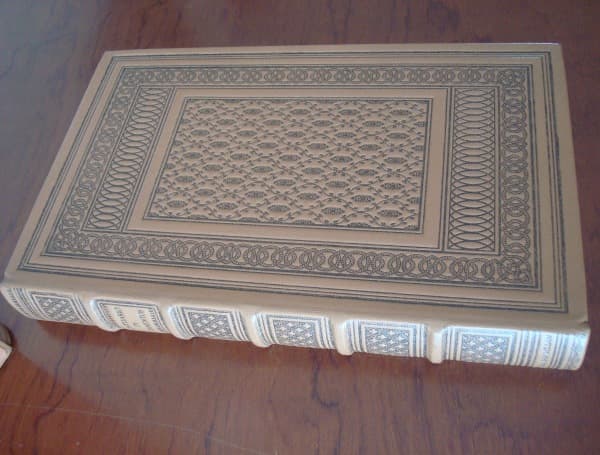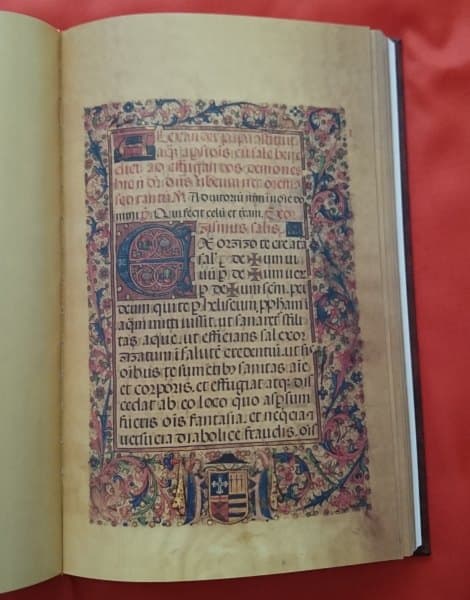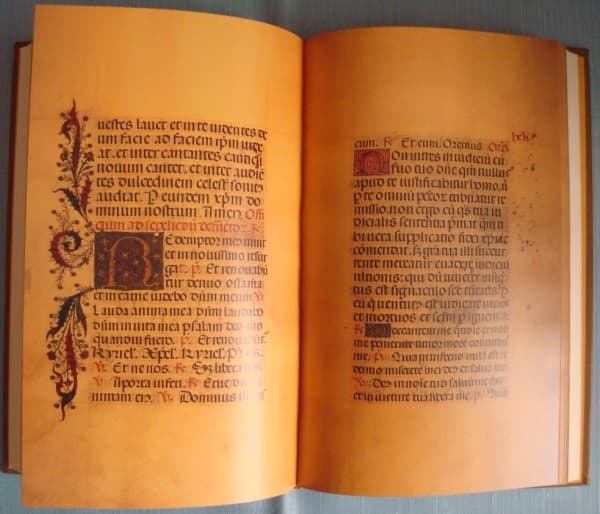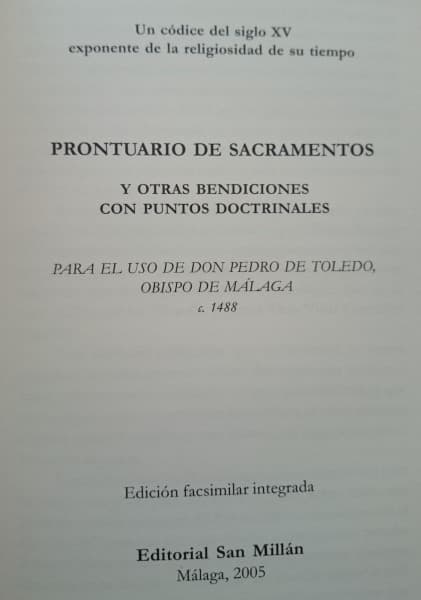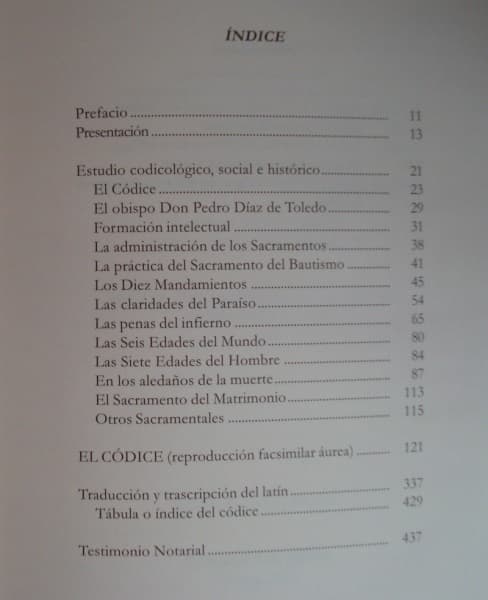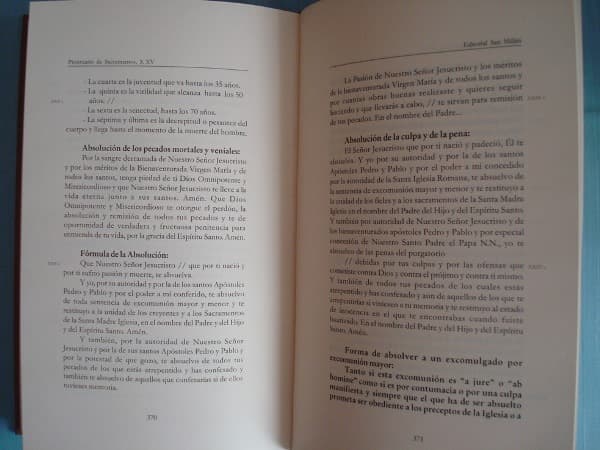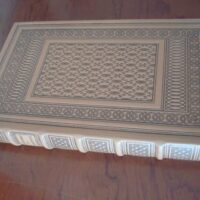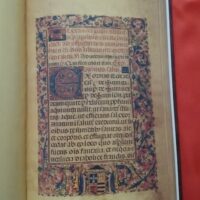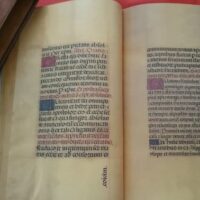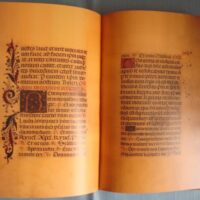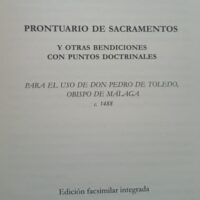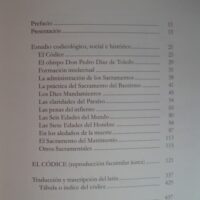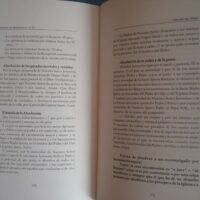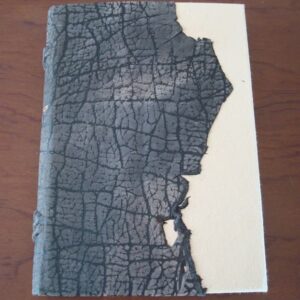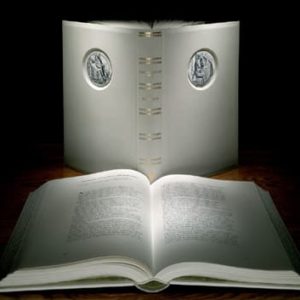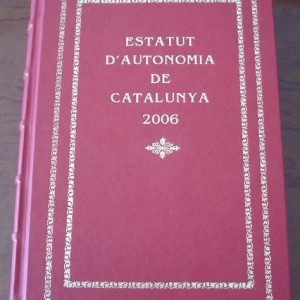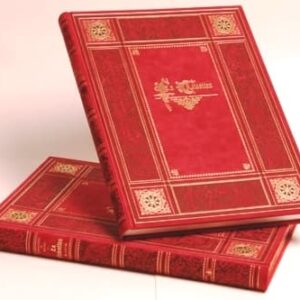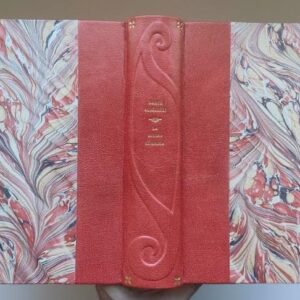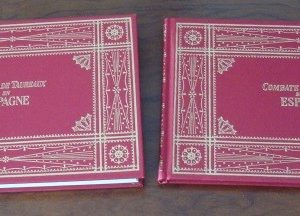Description
The Prontuario de Sacramentos y Otras Bendiciones con Puntos Doctrinales is a beautiful codex, an exponent of the religiosity of its time and used, around 1488, by D. Pedro Díaz de Toledo y Ovalle, the first bishop of Málaga after the reconquest of the city by the Catholic Monarchs in 1487. A man of letters, a highly cultured humanist, he was the teacher of the Marquis of Santillana with whom he shared friendship, a library and literary interests. He was also a close friend of the Archbishop of Granada, Fray Hernando de Talavera.
The book is an integrated facsimile reproduction of the original work and its corresponding translation from Latin to Spanish and codicological study carried out by Dr. D. Vidal González. Limited edition of 925 copies, numbered with a notarial act.
Copy with an extraordinary and beautiful binding in Mudejar style leather of the period, embossed and dry decorated, ribbed spine, golden format 17.5 x 27.8 cm. Presented in an exclusive case, open type, lined in brown microfibre. Format 18.5 x 29.5 x 4.5 cm.
“prontuario”, from the Latin promptuarium, pantry, is, according to the Royal Spanish Academy of Language:
– Summary or brief note of various things in order to have them present when needed.
– Compendium of the rules of a science or art.
The following information about this work comes from the codicological study, including a translation from Latin into Spanish, carried out for this edition by the Doctor of Philosophy and Letters and former Archivist of the Cathedral of Malaga, Don Vidal González Sánchez (1927-2023).
Among the great documentary wealth contained in the Historical Archive of the Cathedral Chapter of Malaga, we highlight a Gothic-Mudejar codex that, in our work of cataloging said archive, we were lucky enough to identify thanks to the coat of arms that appears on several of its folios, since it lacks the cover folio where identifying and explanatory data of its content and other circumstances would undoubtedly be given.
This is a codex on vellum, bound in leather on wooden boards, measuring 265 x 195 mm, made up of one hundred and six useful folios with a writing box of 165 x 105 mm, written in Gothic-librarian script with very beautiful calligraphy, easy to read although with acronyms and abbreviations that make it, at times, complicated. The field of the lateral margins varies between 30 and 70 mm, of which the largest dimensions correspond to the lower ones together with the external lateral ones, while the upper ones as well as the lower ones oscillate between 30 and 40 mm. Many of the uncial letters are illuminated with graceful arabesques and floral representation, especially on folios: I, VIII, LXXIII, LXXXI and XCIIII. In some of these pages, one can see magnificently polychrome borders, decorated with plant, animal, floral and human motifs, including a prominent heraldic motif which is none other than the coat of arms of the book’s owner, Doctor Díaz de Toledo y Ovalle.
In December 1487, while in Zaragoza where he was accompanying the Court, Toledo received the papal bulls with his appointment as bishop of Malaga.
Doctor Don Pedro Díaz de Toledo y Ovalle was a true man of letters, a lesser-known facet of his life, but we can affirm that he was a true humanist. We can say that he was at the same time a disciple and teacher of that champion of Castilian letters, Don Iñigo López de Mendoza, Marquis of Santillana. If we affirm that he was a disciple of the Marquis, we base ourselves on the fact that he served him as chaplain in his house. From the Marquis, Toledo received experience, lessons in good speech; He learned from his teacher where the written copies of the greatest works were, rare and valuable books from European cultural circles, some of which he acquired or had copied for the Marquis. Don Iñigo and his entire family filled the young chaplain with affection and trust and Toledo received the last words of the latter at the time of his death. If we have stated that he was also the teacher of the Marquis of Santillana, the reason is that Toledo guided his patron in many matters of Theology, Law, etc., from whom he was commissioned to translate for him the most select works of antiquity, since the Marquis always regretted his limited knowledge of classical languages.
After having governed the Church of Malaga with wisdom and prudence, under the advice and protection of his close friend the Archbishop of Granada, Brother Hernando de Talavera, with whom he was, this first bishop of Malaga after the Reconquest gave up his soul to God, in the city of Darro between the last hours of the 21st and the first hours of the 23rd of August of the year 1499. He had gone there to greet the monarchs who at that time were in Granada and to discuss with them important matters of use for his bishopric, so that the kings promised to come to the city of Malaga. There Bishop Toledo granted his will. His remains were immediately transferred to his See in Malaga where they received provisional burial in his Cathedral until the construction of his chapel pantheon under the patronage of Saint Jerome was finished.
Copy in perfect condition and corresponding to the extraordinary deluxe edition with gift case.
Shipping costs according to order and destination. Ask us any questions, indicating the item reference.




